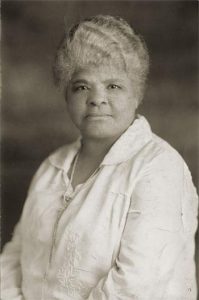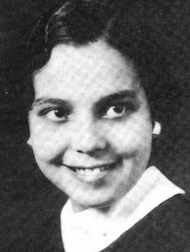Black Women and Political Activism in America
The “She the People Presidential Forum” felt like a seminal moment for women of color in politics. Black women, in particular, have long been known to be the most politically active and most liberal portion of the Democratic party, but presidential candidates have rarely been good about speaking directly to them.
In April, the first presidential forum explicitly for women of color was held. Black women were key to winning Clinton the popular vote in 2016, and to putting Obama into the White House both times.
But this sort of activism on the part of black women is nothing new – this event can easily be placed in the context of a continuous timeline of activism and organizing by black women in America.
One candidate seemed unprepared for the question every candidate was asked, “With so many candidates to choose from, why should women of color choose you?” She shouldn’t have been surprised, because, black women have been asking that question of their leaders for over a century.
“O, ye daughters of Africa, awake! Awake! Arise! No longer sleep nor slumber, but distinguish yourselves. Show forth to the world that ye are endowed with noble and exalted faculties. O, ye daughters of Africa! What have ye done to immortalize your names beyond the grave? What examples have ye set before the rising generation? What foundation have ye laid for generations yet unborn?”

When Maria W. Stewart wrote this rousing call in the early 1830s, more than 30% of the American South’s population was enslaved. Stewart was born in Connecticut, was orphaned by the time she was five, and in 1831 her first political pamphlet was published by famed abolitionist publisher William Lloyd Garrison.
She began speaking in public, eventually to both men and women, something that at the time was banned in many places for a woman to do. She advocated for not only the abolition of slavery, but for racial pride, gender equality, women’s education, and for African American’s to move away from depending on white society at all. She was a brilliant speaker and writer, but by no means was she alone.
In 1832 the first women’s anti-slavery society was founded entirely by free black women. Later, organizations founded by both black and white women as well as those that were segregated would be founded, but it is notable that they were the first.
These groups provided the most significant organizing and funding for anti-slavery organizations as a whole and were skilled at getting the word out about their mission. It was in 1837 that both black and white women gathered to hold the Anti-Slavery Convention of American Women.
The event was significant in bolstering the voices of women in the fight against slavery, but it was also a significant moment in the rise of organized feminism. Many scholars argue that without this convention the famed Seneca Falls – credited with spurring modern feminism and the push for suffrage – would not have happened.
Black women – free and enslaved – were heavily involved at every step of the way in the fight toward emancipation. After the Civil War, two million formerly enslaved were thrust into American society with no government support.
In the American South, first cultural practices and then laws made it impossible for black Americans to participate as full citizens, and in the North deep-rooted prejudice and systemic racism put up many barriers to economic or social equality.
Into that void stepped black women, through the church and women’s clubs. Women’s clubs had been growing in popularity in America at the time already. These were social and philanthropic organizations for middle and upper-class women, and out of this broader movement grew the black women’s club movement.
For example, in Chicago, the women’s clubs provided kindergartens, nurseries, youth clubs, homes for the aged, and homes for young girls and women. All over the country, they provided these sorts of basic services, but they were politically involved too. The Women’s Era, published by the Women’s Era Club of Boston, became an important megaphone for black women’s issues and a place to showcase the writers.

In response to black women being kept out of the Columbian Exposition in Chicago in 1893, it was realized a cohesive national organization of black women’s clubs was needed. Out of this need, the National Association of Colored Women (NACW) was founded, a full 15 years before the founding of the National Association for the Advancement of Colored People (NAACP).
Women were not permitted to be ordained in the AME church, and it was only in 1884 that a ‘compromise’ was reached in which they could be licensed as preachers, but not ordained as ministers. This was despite the fact that “men stood in the pulpit and sat on the church board; women did everything else,” according to the memory of one woman of the time. They ran fundraisers, organized community serves, managed the choir, music, and food.
Black women were answering the call to preach years before they were officially allowed, and often punished for their trouble. Black Baptist churches were often even more restrictive, but even there, women were the heart of community church activity. Women in church-centered organizations managed their own money for their clubs and managed their own goals. They were able organizers, and independent.
These organizing skills developed and honed by black women completely on their own initiative would prove to be essential for the fight to come. When the NAACP was founded, most of the early officers were male and white. The one black woman, Kathryn Johnson, was the exception.
Even though later leaders were black, they were still male. Other than its officers, the majority of the NAACP was kept running and attended by women. It was built on the bones of the black women’s club movements and church organizing skills. Women were in charge of recruitment, fundraising, keeping local chapters alive, and managing early on the ground decision making.
In Indianapolis, Mary Cable founded the NAACP branch there, and all of the officers and members of the board were also women. And then, after 13 months, the women asked the men of the black community to take over because, as the women put it, the men “have more time.”
In early NAACP branches, women outnumbered men sometimes three or four to one, and even though men continued to hold most national-level officer positions, many state and regional chapters were headed by women. Many of the black women doing the work were also lower class, not lawyers or educated professionals like those in charge of the NAACP, compounding the reasons that they have been left behind by history.

It was the Montgomery Bus Boycott that pushed the young and charismatic Martin Luther King Jr. into stardom and the position of presumed leader of the movement, but the boycott was founded, organized, and sustained by black women. Ella Baker organized and originally conceived of the boycott, and had already suggested one before Rosa Parks’ famous act of peaceful resistance.
It was Ella Baker and her fellow female organizers who ran and managed the carpools that were the reason the boycott lasted as long as it did and had the impact it did. Black women continued to play an essential role in the Civil Rights Movement, providing the majority of the on the ground recruitment and organizing for organizations like the NAACP, SCLC, and SNCC.
In Arkansas, the state NAACP chapter was lead by Daisy Bates. It was her who hand-picked the nine black students who tried to enter Central High School, and she organized the pressure put on the school to admit the Little Rock Nine. She arranged for the police escort and coached the students on what they would be facing. Eisenhower sent in the troops to protect the students, and although media attention abated throughout the year and the soldiers left in January, persecution by white students continued until the end. All but one of the original nine graduated, largely thanks to Bates’ organizing and support.
Constance Baker Motley was NAACP’s Legal Defense Fund’s principal trial lawyer. The landmark cases that we all know, like 1954’s Brown v. Board, were important, but it was this follow-up work that really made a difference. It was only later that colleges were required to adhere to the laws, and states were required to enforce Brown, and it took until 1963 for George Wallace to give up fighting Brown. Much of this important work was done locally, but it had national ramifications.

Another black woman, Juanita Jackson Mitchell, was the first black woman admitted to the bar in Maryland. Because of her work Baltimore became the first city below the Mason-Dixon to desegregate after Brown, she desegregated Maryland’s state and municipal swimming pools and beaches, and she defended homeowners whose houses were searched without warrants on the instruction of Baltimore’s police commissioner.
In our recent past, this tradition of coming together in the face of oppression has continued. It was a black woman activist, Alicia Garza, who created #BlackLives Matter. Garza herself has highlighted that the work and leadership of Black women, especially Black queer women, in the movement against anti-Black violence.
In forums like the “She the People Presidential Forum” black women and other women of color are stepping out from behind the scenes and into the spotlight in demanding the equality for themselves and their community, and continuing the work of their mothers and grandmothers that have pushed forward many of the most important movements in the push for freedom.

Storm Hogan enjoys spending time with her family, including her dog, Shiloh. She has been writing ever since she can remember, even to the bewilderment of her parents. She has a very broad taste in reading poetry and fiction, as well as a deep interest in many different genres of music. Right now she is attending Howard Community College in Maryland, and plans on transfering to a university to get her four-year degree.
